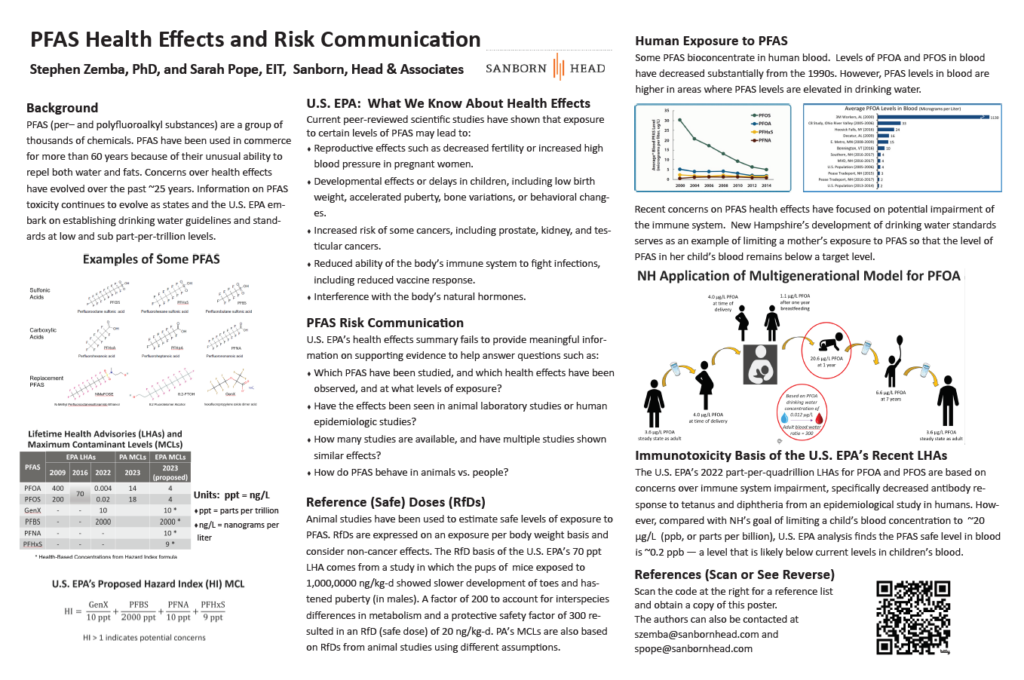PFAS (per– and polyfluoroalkyl substances) are a group of thousands of chemicals. PFAS have been used extensively in commerce for more than 60 years because of their unusual ability to repel both water and fats. Concerns over health effects have evolved over the past ~25 years. Information on PFAS toxicity continues to evolve as states and the U.S. EPA embark on establishing drinking water guidelines and standards at low and sub part-per-trillion levels.
Below is the poster presented at the Pennsylvania Brownfields Conference, State College, PA on March 25-27, 2024.
PFAS Health Effects and Risk Communication Poster (click to download)
CITATIONS
Boldface indicates title of poster section; Click on orange text to open hyperlinks
Background (drinking water standards and guidelines)
- U.S. EPA 2009, 2016, and 2022 Lifetime Health Advisories
- U.S. EPA Proposed Maximum Contaminant Levels
- PA PFAS MCLs
U.S. EPA: What We Know About Health Effects
Reference (Safe) Doses (RfDs)
- 20 ng/kg-d (U.S. EPA, 2016), in support of 70 ppt Lifetime Health Advisory
- PA, in support of Maximum Contaminant Levels
- Alternative example: Agency for Toxic Substances and Disease Registry (2021), in support of Minimum Risk Levels
Human Exposure to PFAS (Blood Levels)
PFAS Generational Modeling
- Goeden et al. (2018), J Expo Sci Environ Epidemiol. 29(2):183-195
Immunotoxicity Basis of the U.S. EPA’s Recent LHAs




